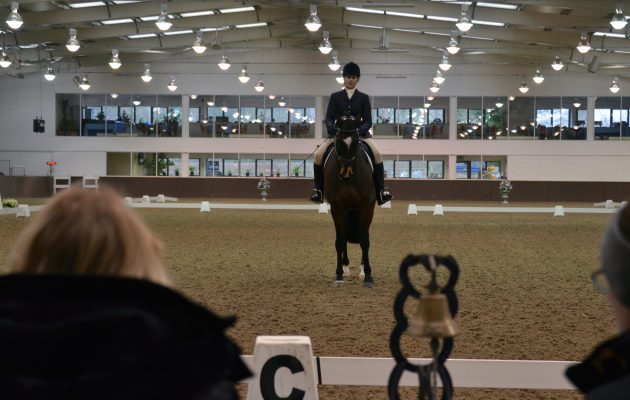It sounds obvious, but these are so often badly ridden within a dressage test. So to help, here’s five pointers to help you nail this movement and earn all the marks you can
1. What the judges are looking for
On your dressage test sheet you will see that judges are looking for “quality of pace, regularity and tempo.” These three are all part of the same thing. A quality pace has regularity (rhythm) and tempo. Rhythm is the beat of your horse’s footfall. Riders often think they have a poor rhythm and this is due to it being too quick. It’s the tempo (the speed of your rhythm) you need to get right. If you are nervous you are likely to have a tendancy to speed things up.
2. 20m is a large circle — you don’t need to overdo inside bend
The most common error on a circle is too much bend to the inside. The judge wants to see that your horse’s body fits along the curve of the circle. They don’t want to see his head turned to the inside or looking back towards his tail. The flexion is not a neck bend; you should have enough of a flexion to see the horse’s eye, ear and nostril.
Continued below…
Looking to hone your skills with some schooling? How about these?
- Marsha Webb clinic in Buckinghamshire
- Flatwork instruction near Bournemouth
- Train with a BD List 1 judge
- Polish your test riding with a three/four-star eventing dressage judge
3. Learn your shape
4. Remember to ride for accuracy marks
Showing the difference between corners and circles makes your test look neat and well polished. The judges will award extra marks for accuracy and these can mean the difference between winning and not.
Continued below…
Want to put your schooling to the test? How about these competitions?
- Unaffiliated and affiliated dressage in Staffordshire
- British Dressage near St Albans
- Unaffiliated dressage in Scotland
- Evening dressage in Oxfordshire
- Dressage for nervous riders in Aberdeenshire
- Affiliated dressage in Kent
- Young horse and RoR affiliated dressage qualifiers and Premier League in Lincolnshire
5. You should never not be turning
The correct shape means you will be nowhere near corners of arena. There should be no trotting on the track in 20m apart from at C where you hit it for a couple of strides and again at each side and over X. There should be no straight lines – touch the track and leave the track.




